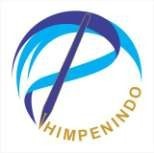Emisi Metana (CH4) pada Beberapa Metode Pengelolaan Limbah Sawah di Kecamatan Anjir Pasar Kabupaten Barito Kuala
Abstract
Paddy fields for all of Indonesia are 8.1 million ha, about 43% are in Java and about 57% are outside Java. Paddy fields are part of the wetlands. Paddy fields control the global climate through the gases they produce and have a greenhouse effect. One of the greenhouse gases is methane, therefore the purpose of this study was to determine the effect of rice field waste management on methane emissions and the population of methanogenic microorganisms. The research method used is one-factor Completely Randomized Design (RAL). The factor tested was the method of managing rice waste before planting rice with five treatments namely: A = Rice field waste was slashed and then lifted into the mound after a few days of being returned to the field; B = Rice field waste is carried out management slashed, rolled up, reversed, and stretched; C = Rice field waste is slashed, planted with traces and then slashed again after the trace is transferred to land outside the research plot; D = Rice field waste sprayed with herbicide 2 times; E = Ricefield waste sprayed with herbicide 1 time and then soil in the tractor. Each treatment was repeated four times so 20 units of the experimental. CH4 gas retrieval used the hood method while the microorganism population used the MPN (most probable Number) method. The results showed that the rice field waste management method had an effect on methane emissions and populations of methanogen microorganisms in the planting and vegetative phases, while the generative phase had no effect.
References
Abduh, A.M., Annisa, W. 2016. Interaction of paddy varieties and compost with flux of methane in tidal swampland. Jounal of Tropical Soils 21(3), 179-186. http://dx.doi.org/10.5400/jts.2016.v21i3.179-186
Abduh, A.M., Hanudin, E., Purwanto, B.H., Utami, S.N.H. 2019. Effect of plant spacing and organic fertilizer doses on methane emission in organic rice fields. Environment and Natural Resources Journal 18(1), 66–74. http://dx.doi.org/10.32526/ennrj.18.1.2020.07
Badan Pusat Statistik Barito Kuala. 2023. Barito Kuala dalam Angka 2022. Badan Pusat Statistik Barito Kuala, Marabahan.
Davamani, V., Parameswari, E., Arulmani, S. 2020. Mitigation of methane gas emissions in flooded paddy soil through the utilization of methanotrophs. Science of The Total Environment 726, 138570. https://doi.org/10.1016/j.scitotenv.2020.138570
Guerrero-Cruz, S., Vaksmaa, A., Horn, M.A., Niemann, H., Pijuan, M., Ho, A. 2021. Methanotrophs: Discoveries, environmental relevance, and a perspective on current and future applications. Front. Microbiol. 12, 678057. https://doi.org/10.3389/fmicb.2021.678057
Hafizah, D., Hakim, D.B., Harianto, Nurmalina, R. 2020. The role of rice’s price in the household consumption in Indonesia. Agriekonomika 9(1), 38-47. https://doi.org/10.21107/agriekonomika.v9i1.6962
Irawan, M.A.R. 2021. Emisi Gas Metana dari Sawah di Kecamatan Anjir Pasar yang Ditanami Padi Unggul Hasil Radiasi dan Padi Lokal. Skripsi, Fakultas Pertanian Universitas Lambung Mangkurat, Banjarbaru.
Kumar, M., Yadav, A.N., Saxena, R., Rai, P.K., Paul, D., Tomar, R.S. 2021. Novel methanotrophic and methanogenic bacterial communities from diverse ecosystems and their impact on environment. Biocatalysis and Agricultural Biotechnology 33, 102005. https://doi.org/10.1016/j.bcab.2021.102005
Mar, K.A., Unger, C., Walderdorff, L., Butler, T. 2022. Beyond CO2 equivalence: The impacts of methane on climate, ecosystems, and health. Environmental Science & Policy 134, 127-136. https://doi.org/10.1016/j.envsci.2022.03.027
Masganti, Simatupang, R.S., Alwi, M., Khairullah, I., Nurzakiah, S. 2022. Pengelolaan Hara dan Tanaman di Lahan Rawa Pasang Surut. Rajawali Pers, Depok.
Masganti, Simatupang, R.S., Noor, M., Mukhlis, Maftuah, E., Alwi, M., Hasbianto, A. 2021. Pertanian Rawa Pasang Surut Sulfat Masam. Rajawali Pers, Depok.
Sass, R.L., Cicerone, R.J. 1999. Photosynthate allocations in rice plants: food production or atmospheric methane. http:// www.pnas.org/cgi/content//99/19/11993.
Scott, B., Baldwin, A.H., Yarwood, S.A. 2022. Quantification of potential methane emissions associated with organic matter amendments following oxic-soil inundation. Biogeosciences 19(4), 1151-1164. https://doi.org/10.5194/bg-19-1151-2022
Syahputra, M., Supriadi, Marpaung, P. 2021. The mapping of irrigated paddy fields which were polluted by detergent waste in Kolam Village, Percut Sei Tuan Sub-district, Deli Serdang District. Jurnal Pertanian Tropik 8(2), 144-149. https://doi.org/10.32734/jpt.v8i2.8078
Talbot, C.J., Bennett, E.M., Cassell, K., Hanes, D.M., Minor, E.C., Paerl, H., Raymond, P.A., Vargas, R., Vidon, P.G., Wollheim, W., Xenopoulos, M.A. 2018. The impact of flooding on aquatic ecosystem services. Biogeochemistry 141, 439–461. https://doi.org/10.1007/s10533-018-0449-7
Yin, X., Jiang, C., Xu, S., Yu, X., Yin, X., Wang, J., Maihaiti, M., Wang, C., Zheng, X., Zhuang, X. 2023. Greenhouse gases emissions of constructed wetlands: Mechanisms and affecting factors. Water 15, 2871. https://doi.org/10.3390/w15162871
Yue, X.L., Gao, Q.X. 2018. Contributions of natural systems and human activity to greenhouse gas emissions. Advances in Climate Change Research 9(4), 243-252. https://doi.org/10.1016/j.accre.2018.12.003
Zhang, H., Gao, Z., Shi, M., Fang, S. 2020. Soil bacterial diversity and its relationship with soil CO2 and mineral composition: A case study of the Laiwu experimental site. Int. J. Environ. Res. Public Health 17, 5699. https://doi.org/10.3390/ijerph17165699
Zulkifli, Mulyani, S., Syahputra, R., Pulungan, L.A.B.R. 2022. Hubungan antara panjang dan lebar daun nenas terhadap kualitas serat daun nanas berdasarkan letak daun dan lama perendaman daun. Jurnal Agrotek Tropika 10(2), 247-254. http://dx.doi.org/10.23960/jat.v10i2.5461
Copyright (c) 2024 Mariatul Asykiah, Abdul Hadi, Meldia Septiana

This work is licensed under a Creative Commons Attribution-ShareAlike 4.0 International License.

















